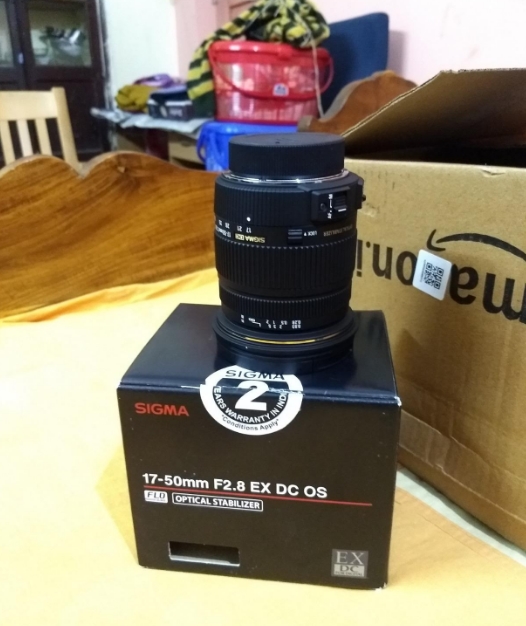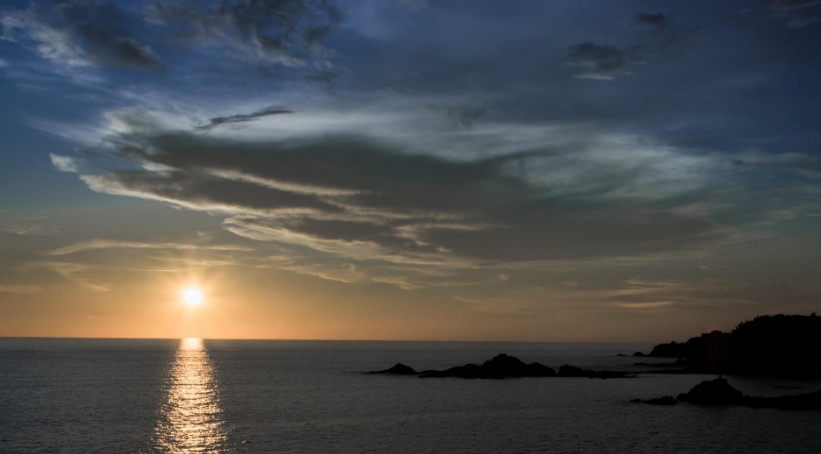Today I am comparing two “premium” third-party standard zoom lenses: the Tamron 17-50mm F2.8 VC ($650, B&H), and Sigma 17-50mm F2.8 OS ($594, B&H). Both offer a useful 17-50mm with a fast F2.8 max aperture (at all focal lengths). Both feature optical stabilization. Both are available for multiple camera mounts (including Canon, Nikon, and Sony).
Interestingly the price difference in The Netherlands (where I live) used to be reversed, although recently the Tamron got more expensive and the Sigma much cheaper, so they currently retail for €419 and €389 respectively (28 December 2013).
In addition to their similar specifications, these two have very similar sizes and weights and compete in the same price range. Direct competitors, therefore. But which one is best?
I got my hands on both of them (Nikon mount) and put them to the test.
Read: How To Batch Crop and Edit Photos
Why do you want a 17-50mm f/2.8?
If you go to photograph an important event (such as a wedding) and had to take only one lens, a fast normal zoom would probably be it. It’s the professional’s workhorse.
In “full frame” terminology this typically means a 24-70mm F2.8. Such lenses are optimized for quality and speed. The 3x focal range covers the useful range of moderate wide-angle to a moderate telephoto. The relatively fast F2.8 maximum aperture is available at all focal lengths. Expensive extra-low dispersion glass and professional materials complete the quality package.
But many people can’t afford full-frame. And let’s face it – today’s APS-C cameras have very good sensors, so all you need is to put a fittingly good lens in front of them. The closest thing for people like me with 1.5x/1.6x crop facor cameras (e.g. Nikon DX, Sony NEX, Canon EF-S) are 16/17-50/55mm F2.8 lenses. To be precise on a 1.5x crop sensor camera a 17-50mm lens has similar optical characteristics as a 25-75mm F4.0 lens would have on a 35mm “full frame” (read here for a short explanation of how this works). You would actually need something like a 16-50mm F2.0 lens to really give you the same performance, but since they don’t exist we have to settle for the F2.8s.
So the bottom line is that a 17-50mm F2.8 is the best quality all-rounder you can stick in your cheap DSLR’s lens hole.
Mechanical Design
Despite their plastic exteriors, both lenses feel solid and well put together. Not indestructible, but solid enough. They’re almost exactly the same size, and weight (568g vs 569g, as tested).
At the back both have metal mounts (as you would expect). Neither has a rubber gasket against moisture or dust.
The Tamron has a 72mm filter thread and the Sigma has a larger 77mm thread. Smaller filters are cheaper, but 77mm filters are something of a standard for pro lenses and therefore more versatile.

As with most consumer zooms, both lenses feature inner tubes that extend when zooming from 17mm to 50mm. Luckily neither lens has a rotating front element meaning polarizing filters can be used without any annoyance. Both feature similarly sized, rubberized zoom and focus rings. The Tamron’s zoom ring was a bit too stiff for my liking.
The Sigma ships with Sigma’s signature “EX” style zipped lens case that is great for traveling, while the Tamron comes without any protective pouch at all. Both lenses come with petal-shaped lens hoods.
Sharpness and contrast
Analytical sharpness vs aperture charts for these lenses can be found on several websites so I decided to test them on a real scene, side by side. These shots were all taken with my Nikon D7000 mounted on a tripod, using a 5-second self-timer and delayed shutter (to eliminate any blurring due to vibrations). The lenses had their stabilization systems switched off since they were tripod-mounted. Phase-detect AF was used. Photos were taken in RAW and converted to JPG using Adobe Lightroom 4.1.
I used identical processing settings for all photographs and didn’t use any lens correction profiles.

Both these images were taken with default settings.

Conclusion (sharpness):
Both lenses have good sharpness and contrast when you stop them down to F4.0 and perform excellently at F5.6+. This is true for all focal lengths. Barring focus issues or camera shake you can be confident that your image will be decently sharp from corner to corner if you stick to these apertures – dramatically so at F5.6.
But how do these two perform at their maximum aperture? After all, you don’t buy an f/2.8 lens only to use it at f/5.6+ do you? Here the Tamron performs well at the wide end (17mm), but things get a bit fuzzy at the telephoto end (50mm) of the zoom range. The Sigma showed almost exactly the opposite performance as the Tamron. At the wide end (17mm) the Sigma’s focusing was intermittently unreliable (more about this later), and even when AF worked correctly the result it was softer than the Tamron. At 50mm f/2.8, the Sigma came into its own and delivered better sharpness and contrast.
Lens flare, vignetting, and chromatic aberration
Vignetting and lateral chromatic aberration (color fringes) are no longer such a big worry since cameras are getting increasingly good at correcting this automatically / in software. Even if your (older) DSLR camera doesn’t have this feature, Adobe Photoshop and Lightroom do a great job at fixing your photos after you download them (especially if you shoot RAW). With both these lenses chromatic aberrations were well-controlled, and not something to worry about in real-world use.
More important is how well these lenses handle bright light (like the sun) hitting the lens from the front. This is something you sometimes can’t (or don’t want to) avoid, and if the lens screws up badly it’s almost impossible to fix the ruined result.

The two lenses perform similarly – at 17mm and F2.8 they handle contra sun reasonably well – the Tamron faring better here. At F2.8 the Sigma and the Tamron both show a “reverse vignetting” ghosting effect where the image corners are much brighter than the center. This effect is more pronounced with Sigma. In the above test shot, I didn’t find it exceptionally distracting, but in subsequent use, it turned out to be a problem in some specific situations.
Except for the reverse vignetting effect of the Sigma which disappears, the contra-light behavior of both lenses gets worse when stopping down, showing strong flare artifacts at F11. Again the Tamron fares somewhat better although the difference isn’t all that great.
At 50mm the relative performances of the two lenses were more or less equal – the Tamron showing a smaller but more intense lens flare.
I was surprised to notice that, at 17mm F2.8, the Sigma seemed generally “brighter” – even in the center of the frame. I can’t say whether this is because of differences in lens coatings or whether Tamron’s F2.8 specification is a bit over-optimistic. This difference diminished at smaller apertures and longer focal lengths
Regular vignetting (dark corners) was well controlled for both lenses at around 1 stop falloff at F2.8, decreasing to 0.5 stops at F4.0.
Bokeh
With a constant f/2.8 aperture these lenses can be used for limited depth-of-field portrait-type shots. The results are not as impressive as on full-frame – as mentioned earlier these lenses have similar optical characteristics as a 25-75mm F4.0 on 35mm “full frame” (short explanation here). Good “bokeh” (out-of-focus rendering) is however still an important and desirable feature of this type of lens.

Here I happily report that both lenses perform quite well, and are very similar. The Sigma shows slight undesirable “onion ring” artifacts within the point spread disk, whereas the Tamron is smoother but exhibits more pronounced outlining and asymmetry. I’d call them equal.
In real-world use, both lenses render backgrounds pleasantly. Overall the Sigma seems to have a bit of a warmer color rendition which I prefer.
Focus and Autofocus (AF)

Both lenses feature built-in focus motors and therefore AF works on all DSLRs. Unfortunately, neither lens offers full-time manual override – you have to move the lens-mounted focus switch from “AF” to “MF” to decouple the focus motor. Failing to do this risks damaging the focus mechanism. Furthermore, the focus paths of The Sigma and Tamron are both very short (~30° vs ~40°) – meaning that even if you decide to use it, manual focussing would be rather coarse. With both lenses, the focus ring turns while auto-focussing. Personally, this doesn’t bother me – I’m happy to rely on AF and keep my hands off the focus ring.
The Tamron uses a traditional micro-motor which is not especially fast, but accurate. Covering the focal range from 0.29m to ∞ takes about 0.6 seconds. Unfortunately, it’s rather noisy and can easily be heard several meters away in a quiet environment, or during video recording. Luckily this noise is usually of short duration unless the lens has to cover the whole focus range (e.g. when focus hunting in dim light).
The Sigma sports a silent “ultrasonic” type motor. Sigma calls this “HSM” and it is both fast and almost completely quiet. Covering the focal range from 0.28m to ∞ takes about 0.3 seconds. Mostly it is also accurate, but here I can’t be as positive as with the Tamron: The first lens I tested (in the shop) had a slight but noticeable front focus problem. I exchanged it for a second sample that tested fine on a focus chart. However, I was disappointed to see that at wide angles and especially longer distances (> 10m) the AF was intermittently unreliable, randomly alternating between hit and miss. Furthermore this lens, unlike the Tamron, often missed focus using my Nikon D7000’s live view! This is very strange and unexpected since “live view” focusing usually succeeds regardless of a lens’ focus calibration. It seems as if the AF crosses the in-focus point too quickly for the camera to realize it, and then incorrectly settles on the wrong focus. Even worse than refusing to focus, the camera reported a focus lock but this was at the wrong focus distance. It could be that my copy was a dud – I am currently considering returning it to the dealer.
Another annoyance with the Sigma is that the lens’ zoom direction is anti-clockwise – independent of the camera mount. Canon and Nikon use opposite clockwise/anti-clockwise conventions for zooming and focusing, and in this case, Sigma’s choice matches the Canon convention. This means that you have to turn the lens in the “wrong” direction when focussing manually. While a seemingly small annoyance this causes frustration and missed shots if you’re used to all your other lenses working in the opposite way.
Optical Stabilisation
The Sigma and the Tamron both have effective optical stabilization, competitive with Canon and Nikon’s own IS / VR systems.
Again we had a noise issue. The Tamron lens’ “VC” stabilization was noticeably noisier than the Sigma. While not “loud”, it is clearly audible to the person holding the camera, and unfortunately also audible in movie clips. This makes the Tamron poorly suited to video capture unless you have a good tripod. To Tamron’s credit, the VC performed well… slightly better than the Sigma, especially at the wide end. At 17mm I measured 3 stops improvement, while at 50mm it was equivalent to the Sigma, at 3.5 stops.
The Sigma’s optical stabilization (OS in Sigma-speak) is almost completely silent and performed well. Sigma claims 4 stops of stabilization, but like with most manufacturers, this seems to be a bit optimistic. At 17mm I measured it as only about 1.5 to 2 stops, while its effectiveness was noticeably better at 50mm where it gave me a 3.5 stops advantage.
To provide some perspective I also compared these lenses’ performance to Nikon’s 18-200mm VR – by now a classic, and a useful benchmark for VR performance. The Nikon rated similar to these two lenses – providing 2.5 stops at 18mm and 3.5 stops at 50mm.
Alternatives
In addition to the Sigma and the Tamron, each of the big DSLR manufacturers has their own f/2.8 standard zoom offering. Canonites get the Canon 17-55mm F2.8 IS, Nikonians the Nikkor 17-55mm F2.8., Sony users the Sony 16-50mm F2.8, and Pentax users the Pentax 16-50mm F2.8.
While these “brand-name” lenses all get good reviews, they are also all more expensive than the Tamron and Sigma. The Nikkor stands out as being the most expensive and bulkiest of the lot while compensating with weather sealing and pro metal construction. The $1000+ Canon is the only one that also offers optical stabilization. On paper then, none of these combine the same value-for-money and specifications as the Tamron and the Sigma.
I have personally used three copies of the expensive Nikkor. While it blew me away with its tank-like mechanical quality and focusing speed, it proved to be less impressive from an optical perspective. Two of the three copies suffered from pronounced field curvature (or corner softness) at 17mm. In terms of general contrast, the Nikkor performed similarly to the Sigma and Tamron, while at its sharpness was similar to or below that of the Sigma (especially at telephoto) and the Tamron (at f/4 and above). Just goes to show that a high price does not guarantee optical perfection.
Summary
A stabilized 17-50mm F2.8 lens is a versatile and valuable addition to an APS-C type DSLR like the Nikon D7000, Canon 650D or 7D, Sony SLT-α650, Pentax K-5, etc. Both of the lenses reviewed in this article fit the bill.
The Tamron performs better for wide-angle (e.g. landscape) shots. And it is (slightly) cheaper. Consider, however, that you normally don’t buy a 17-50mm F2.8 lens only for landscapes, and you don’t buy it because it is cheap. If those are your main considerations you can better invest in a quality wide-angle or a budget 18-55mm kit lens.
With its quieter and faster operation and, especially, its markedly superior performance at 50mm f/2.8 (the setting you will most often use for portrait shots) the Sigma is the one I prefer. It is also a much (much!) better choice for video. Unfortunately on my camera, its AF proved somewhat unreliable at wide angle – even when using live view.
Stabilization is essential for hand-held video, and here the Tamron’s VC stabilization is just too noisy (unless you have an external microphone). The Sigma’s AF motor is inaudible, but the Tamron’s is so loud that you cannot use it stealthily in quiet environments, and not at all during a video (unless you use an off-camera microphone).
Ultimately I found both the Tamron and the Sigma to be quite good, but neither convinced me in all respects. They represent two of the best third-party offerings and have all the features you expect, but each had weaknesses that made me doubt whether I would “get the shot” every time. In the end, Sigma ended up as my general-purpose workhorse and I’m quite happy to report that it serves me well in everyday use. Just watch out for the odd focus error or ghosting artifacts against bright lights.
Pros/Cons of the Sigma 17-50mm F2.8 EX DC OS HSM:
- Fast and quiet AF (but… see below)
- Efficient and quiet “OS” image stabilisation
- Sharp all the way from F2.8 – especially at 50mm
- Excellent at F ≥ 4.0 (all focal lengths)
- Nice carry-case included
- Occasional AF issues at 17mm (quality control?)
- Occasional “reverse vignetting” ghosting at 17mm F2.8 against strong light
- “Reversed” zoom & focus directions (on Nikon, Sony, and Pentax)
- Rotating AF focus ring + no manual override
Pros/Cons of the Tamron 17-50mm f2.8 SP XR Di II LD [IF] VC:
- Reliable AF (but… see below)
- Efficient “VC” image stabilization (but… see below)
- Excellent at F ≥ 4.0 (all focal lengths)
- Sharp at 17mm (all apertures)
- Good value for money in the EU (but less so in the USA)
- Long (5-year) warranty
- Low image quality (soft) at 50mm F2.8
- Noisy AF motor
- Audible “VC” image stabilization
- (a bit) dimmer than the indicated F2.8 at a wide angle
- Rotating AF focus ring + no manual override
Conclusion
My pick between these two is the Sigma 17-50mm F2.8 EX DC OS HSM.
Be aware of its limitations though. A lens in this category should be all about quality. Especially at 17mm it has some issues that can interfere with crucial shots. That said I’ve personally used this lens for assignment work and generally have been very happy with the results.
